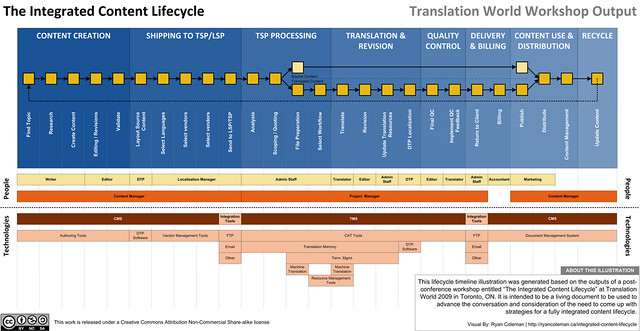CIOs: Versions and Update Controls – Social Media Optimization
Part 8 of our series, What CIOs Need to Know About Social Media.
A post on Mashable from a year and a half ago is still relevant to enterprise CIOs grappling with the impact of social media on the enterprise. In the post, Lon S. Cohen lists seven things CIOs should be considering. We’re taking a closer look at each of the item in Cohen’s framework. In this post, we take a look at Cohen’s fourth item.
- Web 2.0 Content and Presentation Standards
- Review and Approval Processes
- Managing Corporate Reputation
- Versions and Update Controls
- Impact On Operating Environment
- Establishing Project Priority
- Compliance
Creating and Managing a Social-Media-Aware Website
Frankly, Cohen’s discussion about version and update controls doesn’t really talk about anything different for social sites. Every enterprise site should have a content team, a Web Content Management System (we like Tridion), and enterprise-quality search engine (we like Endeca), a Search Engine Optimization (SEO) team, and good policies and procedures to ensure that dynamic and static content is managed, updated, edited and retired – in other words, a Content Development Life Cycle (CDLC).

The social media component of your enterprise site must fit into these structures, and can be treated in the same way as any other dynamic content. What we think changes when your site goes social is the necessity for a Social Media Optimization (SMO) strategy and practice. Developing SMO and integrating it into your version controls and update calendars is the essential activity you’ll need to undertake if you want to succeed in socializing your Website.
Social Media Optimization
SMO is a very deep subject, but let’s get started with a quick list of Social Media Optimization rules, created by Rohit Bhargava of Ogilvy Public Relations, who coined the term, and explained it like this:
The concept behind SMO is simple: implement changes to optimize a site so that it is more easily linked to, more highly visible in social media searches on custom search engines (such as Technorati), and more frequently included in relevant posts on blogs, podcasts and vlogs .
Bhargava proposed 5 Rules of Social Media Optimization (SMO)[1] which were later expanded to 16, and which we’ve adapted below:
- Increase your linkability
Enable and encourage others to link to you, and you should aggregate and link to your other content as well
- Make tagging and bookmarking easy
Enable others to tell a friend; list relevant tags on your pages
- Reward inbound links
Enable permalinks (links to, say, a blog that will never change) and feature bloggers who link to you
- Help your content travel
Submit PDFs or videos, and the like, to other sites to increase their reach
- Encourage the mashup
A mashup is when someone else does something with your content; the classic case is the Google Maps Mashup[2]
- Be a User Resource, even if it doesn’t help you
The classic give to get; contribute to the community and it will come back to you; link users off your site if it will help them
- Reward helpful and valuable users
Reward influencers and champions by promoting their works on the homepage, develop a rating system, or just drop them a quick note in private telling them you appreciate them
- Participate
If you’ve read this far, you know why
- Know how to target your audience
If you’ve read this far, you know why
- Create content
While this seems like a duh moment, think about the content you create in terms of how it can be spread by your community
- Be real
If you’ve read this far, you know why
- Don’t forget your roots, be humble
Just a good rule to live by, overall
- Don’t be afraid to try new things, stay fresh
Pundits from Jean-Baptiste Alphonse Karr (plus ça change, plus c’est la même chose) to Woody Allen (A relationship, I think, is like a shark, you know? It has to constantly move forward or it dies) have advised this
- Develop a Social Media Optimization strategy
A Social Media Optimization strategy, like all strategies, involves defining objectives, setting goals, and tracking progress
- Choose your Social Media Optimization tactics wisely
Don’t do social media to keep up with the Joneses — the Joneses may have a different audience, different objectives, and different resources
- Make Social Media Optimization part of your process and best practices
As we’ve stressed, don’t graft social media onto your organization; assimilate it and make it part of your way of doing business
Next we’ll consider how to Brand Your Enterprise Online.
For soup-to-nuts, strategy to execution processes, procedures and how-to advice, see our book, Be a Person: the Social Media Operating Manual for Enterprises. The book (itself part of a series for different audiences), is available in paper form at http://bit.ly/OrderBeAPerson save $5 using Coupon Code 62YTRFCV
[1] Bhargava’s 5 Rules of Social Media Optimization (SMO): bit.ly/cbHXMh
[2] Google Maps Mania: bit.ly/an0Hly






